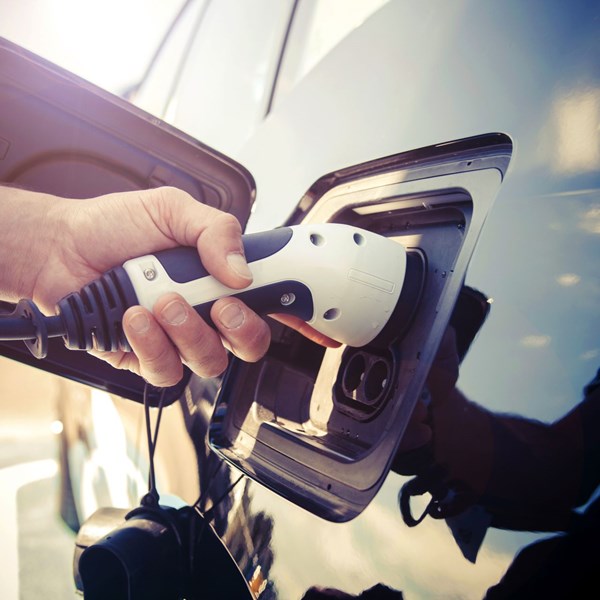This article was first published by Energy Storage News and can be found here.
Artificial Intelligence (AI) and, in particular, machine learning is becoming a tool that is used in many technological fields. In the field of energy storage, the opportunities to apply AI and machine learning techniques are wide-ranging.
Searching the patent databases reveals a wide range of companies looking to secure protection for the application of AI to energy storage challenges.
To give some brief examples:
Octopus Energy Group has a patent application for a “A hot water system providing heated water to one or more water outlets (e.g. shower) comprises a control module and a heat pump that heats a medium (e.g. paraffin wax) in a thermal energy store, the store being used to heat water for the outlet(s). The control module modulates energy consumption of the system so that overall energy usage is reduced.… When a water outlet is opened/turned on, the module controls the system so that the temperature of water at the outlet alternates between an upper temperature (e.g. 41°C) and a lower temperature (e.g. 37°C). The upper and lower temperatures are determined based on an energy consumption target, which may be set by a user or predetermined by factory setting… The upper and lower temperatures could be profiled to specific users, or optimized through machine learning algorithms and tariff costs.”
TATA Consultancy Services Ltd is using AI for material identification and the abstract of their European patent states “The existing methods for identification of material for hydrogen storage as expensive and time consuming. … The method provides a machine learning technique to predict the hydrogen storage capacity of materials, using only the compositional information of the compound. A random forest model used in the work was able to predict the gravimetric hydrogen storage capacities of intermetallic compounds. The method and system is also configured to predict the thermodynamic stability of the intermetallic compound.”
MOIXA Energy Holdings Ltd has pursued protection for “A system for optimising and managing distributed energy storage resources [that] gathers data and monitors usage of end devices and resources at remote sites in a network, and determines a battery charging plan for charging/discharging batteries at the remote sites, where the batteries may be electric vehicle (EV) batteries. … Also claimed are a system for classification of events in an energy system using a recurrent neural network, and a method of recording energy charging events in a mesh-chain.”
Thus, there is plenty of innovation relating to energy storage and AI, but what is the best way to protect these sorts of innovations?
AI has the potential to accelerate development, but it can take a significant amount of investment to develop AI systems and work out how to apply AI to a particular problem. Machine learning requires developers to find and pre-process a significantly large quantity of high-quality training data to generate their models.
It is therefore only proper to consider how to protect AI-based innovations.
DATA IS POWER
In the world of AI, data is often key to success in various different areas. Machine learning algorithms are used to build a model.
In order to build and refine the model, the machine learning algorithms need to be fed large quantities of high quality data. Once trained, those models can be unleashed on new data to make predictions, new designs and recommendations.
The better the data, the better the resulting model. The better the model, the better the predictions that can be made using it. Thus, the quality of the data or the way it is processed before feeding it to the machine learning algorithm can provide you with a significant commercial advantage.
However, the training data is not the only valuable data. With the ready availability of sensors, the data generated by systems deployed in the field can be mined by AI for further innovations.
It is therefore paramount that when implementing AI to an energy storage solution, you recognise the value of the data at all stages and takes steps to protect it.
DATA USE AGREEMENTS
Having control of data by owning the dataset used to train or refine your system is preferred because then you have ultimate control over its use. You can keep it confidential and prevent access to it by any competitor. This will typically require you to generate the dataset yourself or buy exclusive access to the data from another party.
In other circumstances, if data from a third party is required, it may be possible to come to a legal agreement on the use of that data for a particular purpose. For example, it may be possible to secure exclusive use of the data for your particular commercial endeavour.
Finally, if a third party is helping develop your software, then it is important to ensure that you have rights to the use, or ultimate ownership of, the software and the data it generates.
TRADE SECRETS
A trade secret relates to business information that is secret, has value and is subject to reasonable protection. The exclusivity of trade secrets is dependent upon the measures put in place to keep them confidential within a business.
In relation to artificial intelligence, there are the obvious work products that would be readily understood to warrant trade secret protection. For example, the structure of the AI that can make better predictions than that of your competitors, or the proprietary way in which you trained a machine learning model. Steps should be taken to protect these aspects, limit access to only those people who need to know and to monitor that data confidentiality is being adhered to.
PATENTS
A patent is an IP right that describes an invention and includes claims that define a scope of protection for an invention that is deemed, among other things, to be novel and inventive.
Patents are published and therefore the information within them is shared with the public. In exchange for sharing the information with the public, the patent holder is given a time-limited legal right to stop others from making, selling or using their invention as claimed.
In the eyes of many patent offices, the simple application of artificial intelligence to a technical problem is not enough to be inventive and therefore patentable. AI is known to have particular application in complex systems and therefore using it in a complex energy storage system is typically deemed to be obvious.
This does not mean that innovations in the world of AI and machine learning are not patentable. It just means that you need to have done something more than apply AI to a problem in a conventional way. Preparation of the application in a way that emphasises the technical advantages can also simplify the prosecution of the patent application.
STREGNTH FROM BREADTH
A strong IP strategy normally involves combining different types of protection and this is certainly true when working with artificial intelligence. Patents, trade secrets, and recognising the value of the data and the algorithms of the resulting system is a must if you want robust IP protection.





